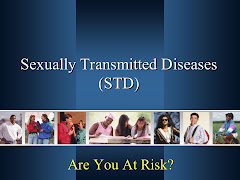
Overview
Pediculosis pubis, known as crabs or crab lice, is an infestation with the crab louse (Phthirus pubis), a millimeter-sized insect that infests the pubic hair, feeds on human blood, and multiplies rapidly. It uses the crablike claws on its legs to grasp the hair of its host, on which female lice lay eggs. Eggs hatch into nits within 5 to 10 days and grow into egg-laying lice in about the same amount of time. A crab louse lives for about 6 weeks, but dies within 24 hours without blood. They do not pose a serious health threat, but are irritating, contagious, and indicate a risk for other STDs.
According to the National Institutes of Health, approximately 3 million people in the United States are infected annually.
Causes and Risk Factors
Crab lice are transmitted commonly during sexual intercourse, when the louse moves from the pubic hair of its host to the pubic hair of the partner. Oral sex can lead to infestation of the eyelashes, eyebrows, face, chest hair, or scalp. They also may be acquired through contact with infested clothing or bedding. Poor hygiene is associated with the spread of crab lice.
Signs and Symptoms
Infected people often notice crab lice in their pubic hair while bathing or learn about them from an infected partner. Itching in the pubic area is a telltale sign but may not occur. Adult lice appear as small, silver-amber or black flecks, the nits as shiny ovals attached to the base of the hair shaft. Tiny blue lesions (maculae ceruleae) may be seen where the insects bite the skin, but these are uncommon.
Diagnosis
A person usually notices infestation once itching begins. Physicians examine the pubic area under magnification for confirmation. Lice and nits may be examined microscopically.
Treatment
Topical treatments, such as creams, lotions, and shampoos are used to eradicate louse infestation. Permethrin cream rinse is usually applied to the pubic area, the fold of the buttocks, and the entire groin area.
Infestations of the scalp may be treated with a 10-minute lindane shampoo, followed by a thorough rinse. Lindane is a pesticide that is associated with serious side effects: neurological damage, poisoning, cancer, and environmental contamination. Its use in adults is controversial and it is no longer used in children.
Eyelash infestations are treated with a petrolatum ointment. A doctor can carefully tweeze nits out of the lashes of children. Pregnant women are treated with Rid®, a liquid pediculicide that kills lice and eggs.
The National Pediculosis Association recommends the manual removal of lice and eggs with a metal comb and careful grooming. Other treatments that may be useful are mayonnaise and tea tree oil applied to infected areas. Clothes and bedding should be laundered thoroughly in boiling water. Items that are difficult to clean, such as large quilts or blankets, can be wrapped and stored away from other clothing and bedding for a month; without blood, the lice and nits will die. A follow-up examination is necessary after about 1 week.
Prevention
Abstaining from close casual and sexual contact is the best way to avoid transmission while infested.



